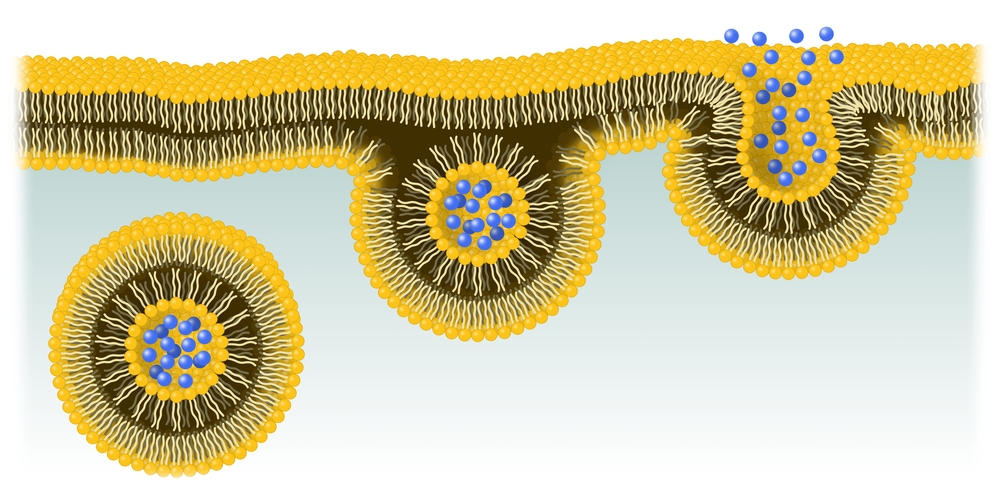Researchers Discover Function of Gene Linked to ALS, Frontotemporal Dementia

Researchers have discovered that C9orf72 — the gene whose mutated version is associated with amyotrophic lateral sclerosis (ALS) and frontotemporal dementia (FTD) — works by activating key proteins for the transport and degradation of molecules inside the cell, in normal conditions.
This discovery expands knowledge on how C9orf72 may contribute to the development and progression of these late-onset neurodegenerative diseases.
The study, “C9orf72, a protein associated with amyotrophic lateral sclerosis (ALS) is a guanine nucleotide exchange factor,” was published in PeerJ — the Journal of Life and Environmental Sciences.
Increasing evidence has shown that ALS and FTD — a progressive neurodegenerative disease that affects behavior, personality, and language — share some genetic, neurodegenerative, and clinic features. Mutations in the C9orf72 gene are now recognized as the most common genetic cause of both conditions.
These mutations are characterized by too many expansions of six nucleotides — GGGGCC — in the C9orf72 gene. Nucleotides are the building blocks of DNA. While healthy people might have up to 30 copies of this sequence, ALS and FTD patients can carry hundreds or even thousands of copies.
The C9orf72 gene provides instructions to make a C9orf72 protein that is found abundantly in nerve cells in the outer layers of the brain and in motor nerve cells. C9orf72 is thought to be located in an area of the nerve cell that is involved in sending and receiving signals to and from other nerve cells.
However, the gene’s normal function, as well as its contribution to the development of ALS and FTD, remains poorly understood.
“It is vital that we know as much as we can about the causes and triggers for ALS and FTD, so we have a better chance of developing treatments, and even one day a cure for these devastating diseases,” Vasanta Subramanian, MD, one of the study’s senior authors, said in a press release.
Previous studies have suggested that C9orf72 is involved in the processes of intracellular vesicle trafficking — or transportation of molecules through vesicles inside the cell — and waste degradation — which occurs in vesicle-like structures called lysosomes — in motor nerve cells.
C9orf72 mutations, which are though to cause reduced levels of C9orf72 protein, have been hypothesized to lead to an impaired waste cleaning process in cells and, ultimately, to the accumulation of toxic products.
Computational analysis of the biochemical structure of C9orf72 has suggested it may act as a guanine nucleotide exchange factor (GEF), a protein that activates Rab GTPases, a subfamily of the Ras superfamily of proteins.
Rab GTPases are proteins that regulate several aspects of intracellular vesicle trafficking, such as the formation, transport, docking, and fusion of transport vesicles. They have been shown to be essential for immunity, hormone secretion, and nerve cell communication, and their dysfunction has been associated with several diseases.
To better understand the precise function of C9orf72, researchers at the University of Bath in the U.K. have analyzed and biochemically characterized the C9orf72 protein and its potential interaction with Rab proteins.
Results confirmed that C9orf72 protein is a GEF, and its main molecular function is to directly bind and activate Rab proteins.
The team found that C9orf72 binds and activates at least three Rab proteins — Rab5A, Rab7A, and Rab11A — and two Rho GTPases — Cdc42 and RhoA — another subfamily of the Ras superfamily.
While Rab proteins regulate intracellular vesicle trafficking, Rho proteins play essential roles in regulating the cytoskeleton — the network of filaments and tubules within the cell that provides cell support and shape, and works as tracks for the transport of vesicles within the cell.
“It is tempting to suggest that C9orf72 might allow for a more complex combinatorial regulation of different intracellular membrane-trafficking events,” the researchers wrote.
“These findings are very timely, as new gene therapy approaches are being developed to specifically target the C9orf72 gene,” said Brian Dickie, MD, the Motor Neurone Disease Association’s director of research. “Understanding what the healthy gene is doing within cells will be important in ensuring that the toxic and not the beneficial effects of the gene are targeted.”






